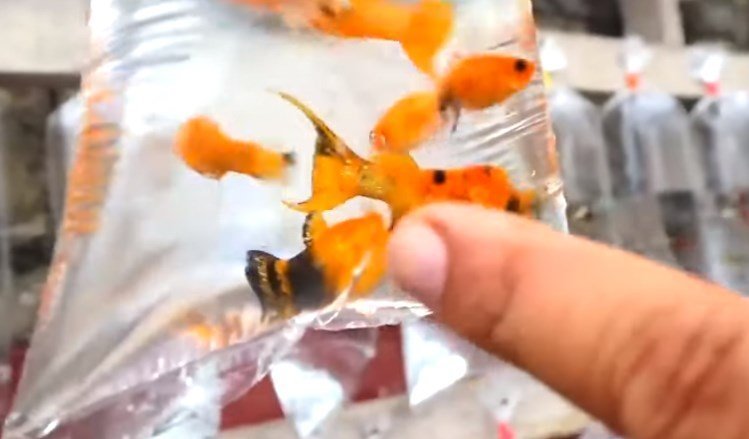A Guide to Hand Feeding African Love Birds with Dexter
Introduction:
Hey everyone, it’s Dexter here from Dexter’s World, welcoming you back to another exciting episode on our channel. If you’re a bird enthusiast, especially one who adores African Love Birds, you are in for a treat! In today’s episode, we’re diving deep into the art of hand feeding these beautiful creatures, sharing insights and tips to help you become successful in this rewarding endeavor.
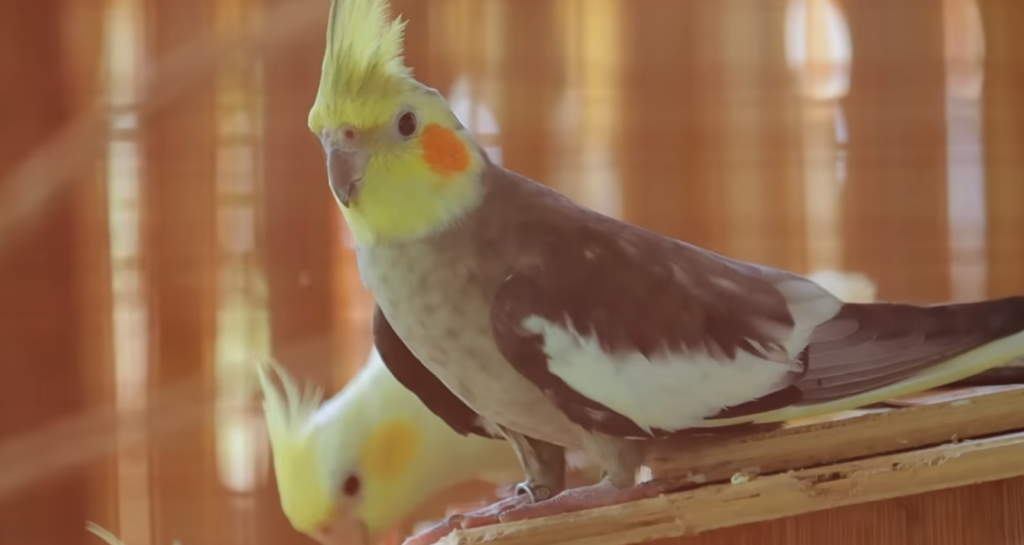
Counting the New Additions:
Just recently, I took a peek inside the nest boxes in our cage and was pleasantly surprised to find a whopping 38 new birds that have hatched! However, today, we are focusing on the bigger chicks, as we plan to harvest 10 of them to start our hand feeding journey. It’s crucial to note that hand feeding baby African Love Birds demands dedication, patience, and a lot of attention as there are numerous factors that can hinder their growth, such as ants, lizards, and predators like rats.

Materials Needed for Hand Feeding:
For those ready to take on this journey, here are some essential materials you will need:
- Syringes for feeding
- A bowl for mixing food
- A plastic spoon
- Hard-boiled egg
- Mixed fruits, soya, rice powder, and banana for the feed
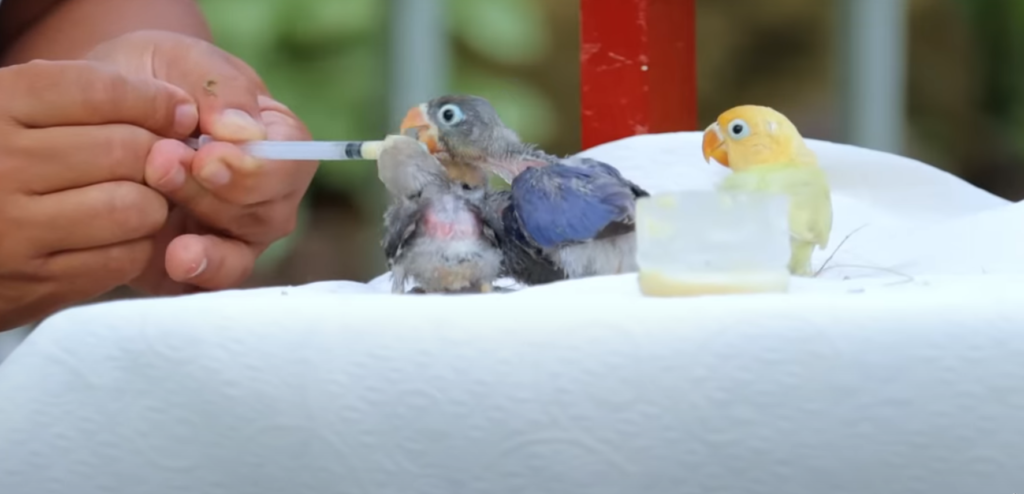
When preparing the feed, mix a small amount of hard-boiled egg with your chosen ingredients and add hot water. The hot water helps to cook the soya slightly, making it gentler on the chicks’ tummies and preventing diarrhea. This is a crucial step we’ve learned from over 2 years of hand feeding experience. Don’t forget to occasionally add Moringa to their food for that extra nutritional boost.

The Hand Feeding Process:
After preparing the feed, it’s time to start the feeding process. The chicks, being new to this, will need some time to adjust. Gently open their beak through the side and carefully insert the syringe to feed them. Ensure that they are at least 3 weeks to 1 month old before starting hand feeding, as this is the optimal time for them to adjust and survive without their parents’ direct care.
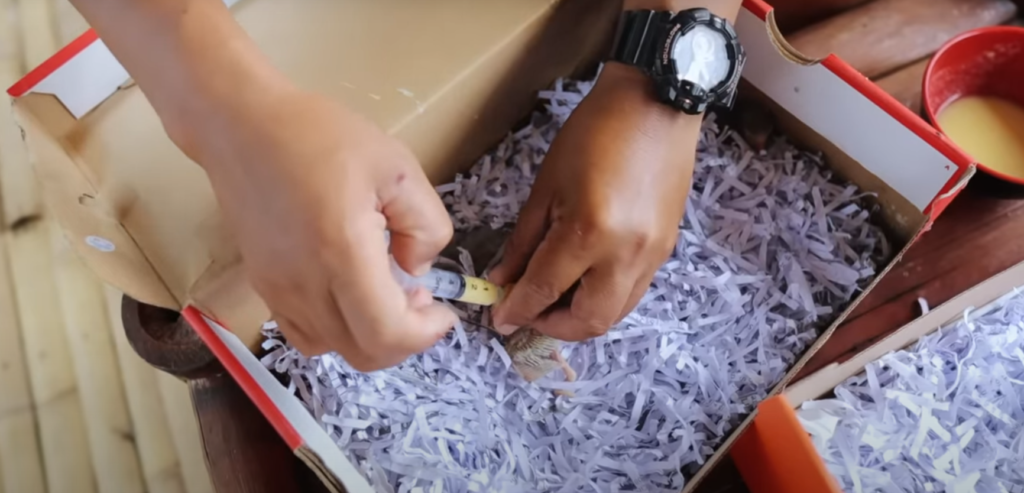
Providing Comfort and Ensuring Survival:
Place the chicks in a secure and exclusive area to protect them from predators. Provide them with shredded paper materials to keep them dry and comfortable, as this helps to reduce stress and prevents them from getting cold. Remember, successful hand feeding is not just about providing food; it’s about creating a safe and comfortable environment for the chicks to thrive.

Feeding Schedule and Additional Tips:
Feed the chicks five times a day at regular intervals: early morning, 9 AM, 12 PM, 3 PM, and 6 PM. Small, frequent meals are crucial, as the chicks are used to being fed by their parents throughout the day. As their surrogate parents now, it’s our responsibility to ensure they are well-fed and cared for.
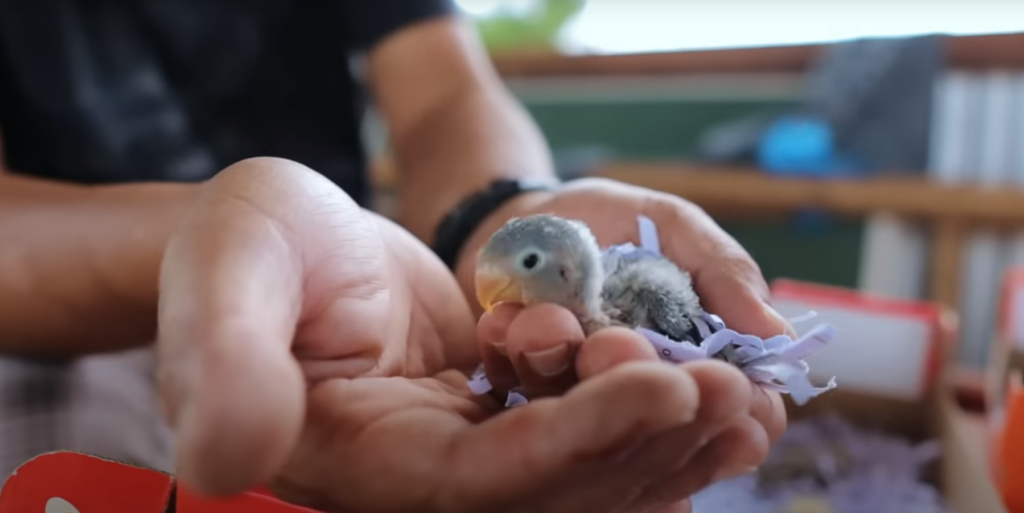
Conclusion:
Bird farming, and in particular, raising African Love Birds, can be an incredibly lucrative and rewarding activity. However, it requires dedication, sincerity, and a genuine love for what you are doing. We hope this episode has provided you with valuable insights and the knowledge needed to embark on your own journey of hand feeding these wonderful creatures.
Don’t forget to subscribe to Dexter’s World for more informative and challenging videos, and hit that notification bell to stay updated on all our latest content. See you in the next video!


